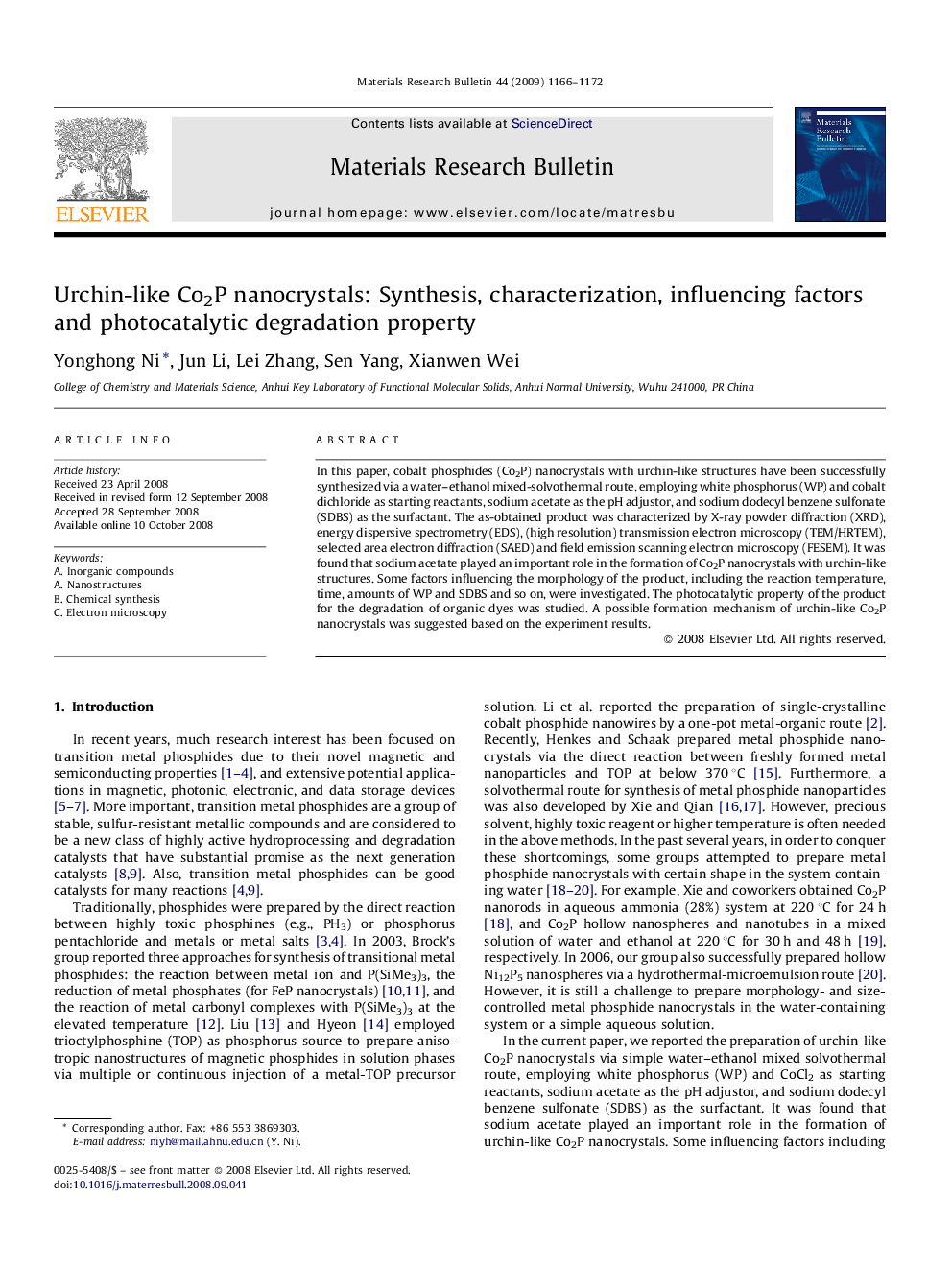| Article ID | Journal | Published Year | Pages | File Type |
|---|---|---|---|---|
| 1491463 | Materials Research Bulletin | 2009 | 7 Pages |
In this paper, cobalt phosphides (Co2P) nanocrystals with urchin-like structures have been successfully synthesized via a water–ethanol mixed-solvothermal route, employing white phosphorus (WP) and cobalt dichloride as starting reactants, sodium acetate as the pH adjustor, and sodium dodecyl benzene sulfonate (SDBS) as the surfactant. The as-obtained product was characterized by X-ray powder diffraction (XRD), energy dispersive spectrometry (EDS), (high resolution) transmission electron microscopy (TEM/HRTEM), selected area electron diffraction (SAED) and field emission scanning electron microscopy (FESEM). It was found that sodium acetate played an important role in the formation of Co2P nanocrystals with urchin-like structures. Some factors influencing the morphology of the product, including the reaction temperature, time, amounts of WP and SDBS and so on, were investigated. The photocatalytic property of the product for the degradation of organic dyes was studied. A possible formation mechanism of urchin-like Co2P nanocrystals was suggested based on the experiment results.
